Employees are required to follow specific codes of conduct at different workplaces. While the ideal situation is to have every employee observe this code of conduct, it is not always the case. Certain employees will sometimes fail to meet the employer’s expectations to a point where formal interventions have to be made. The severity of the disciplinary action is dependent on the type and severity of the type of behavior. While some types of misconduct will have drastic actions such as termination of employment, others are resolved through less-drastic measures such as a write-up form.
Employee write-ups are official records of a business and are used to keep track of company policies and standards violations.
In addition, write-ups are used as HR management tools to offer employees counsel and an opportunity to make appropriate behavior changes to maintain their jobs. The document does not equate to employment termination, and an employer can issue one employee two or more write-ups before resorting to termination. The form can have detailed documentation of the violation, such as written witness statements as a matter of record. In addition, it can contain a call to action or plan for improvement for the employee, directing them on what to do to retain their work.
It is a management document used to notify and record an employee’s unacceptable behavior, such as violation of company policies and code of conduct and warn them of more severe consequences unless they make changes or improvements. The document is written by managers, supervisors, HR, and sometimes co-workers to report an employee’s bad behavior or workplace violation.
Employee Write up Form Templates
Knowing where to start when writing it can be a challenge for some people. It is, therefore, common for managers and supervisors to use templates when “writing up” employees.
Templates are easy to use as they are typically designed with all the essential components of a write-up, and all the user has to do is fill it out to suit their needs. To assist our readers with this process, we have provided free downloadable templates for their assistance.
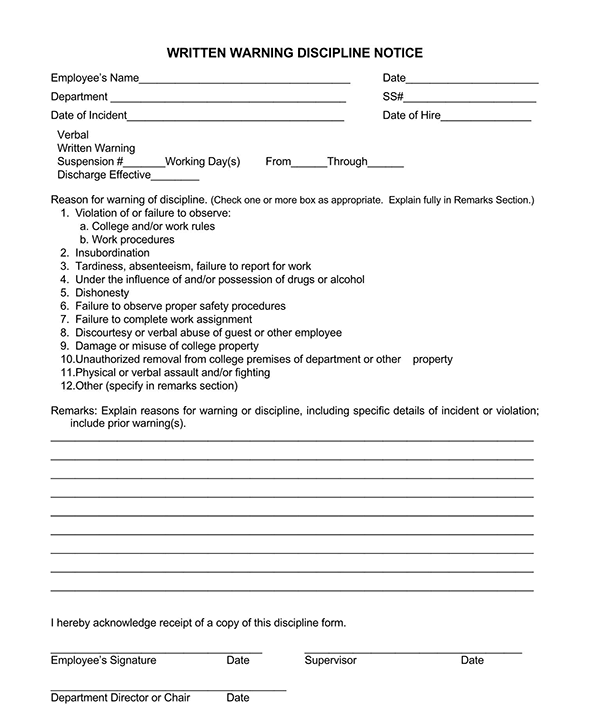
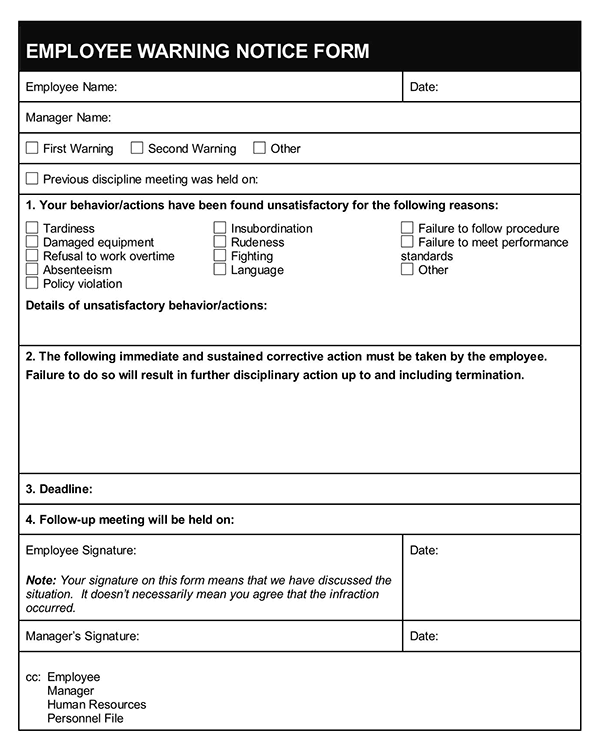
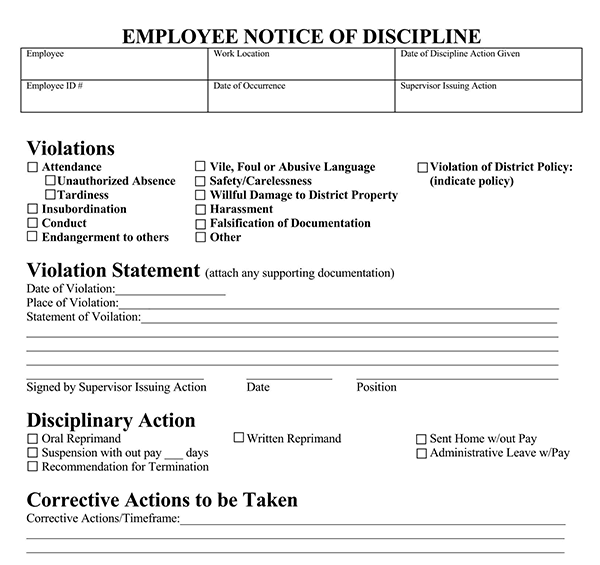
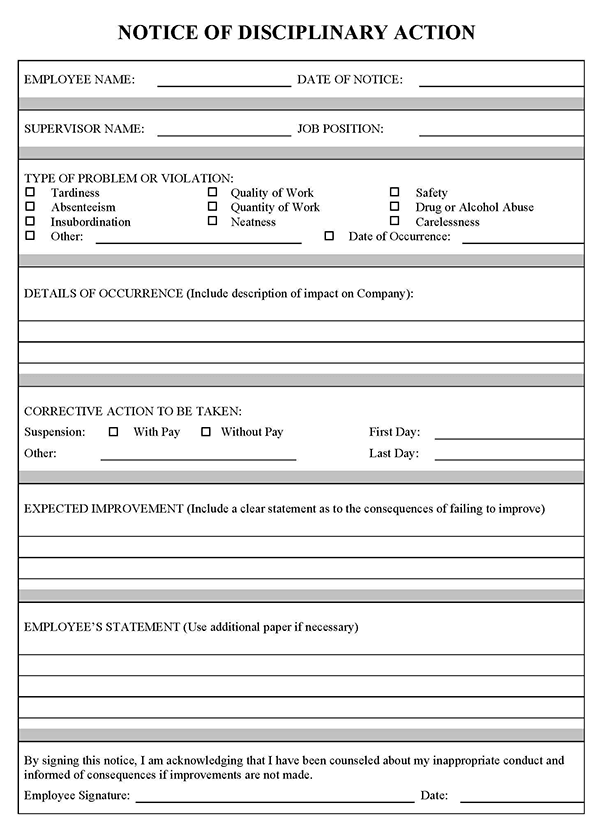
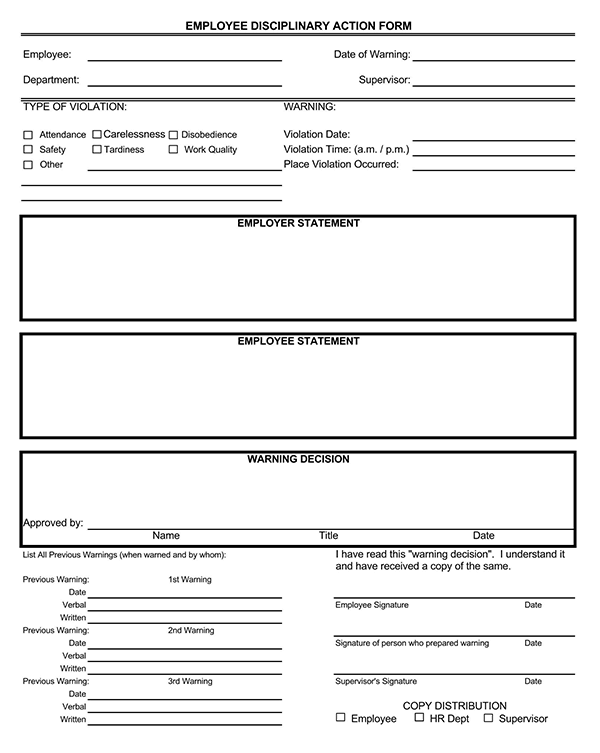
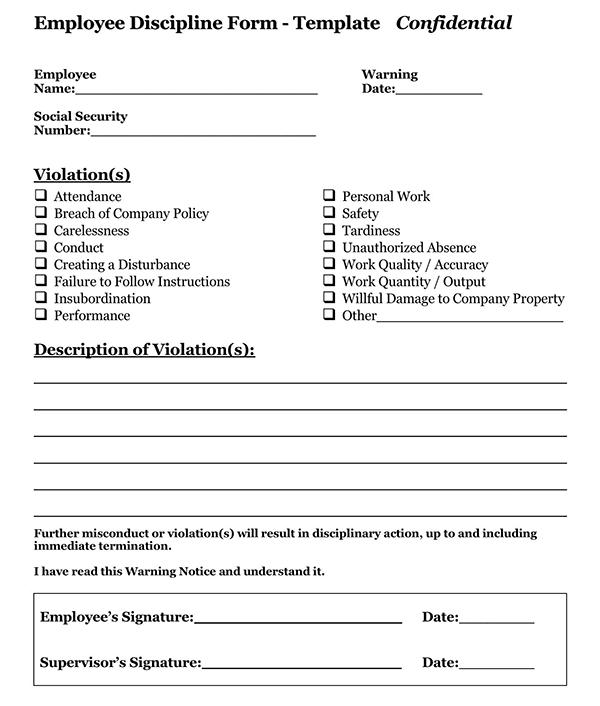
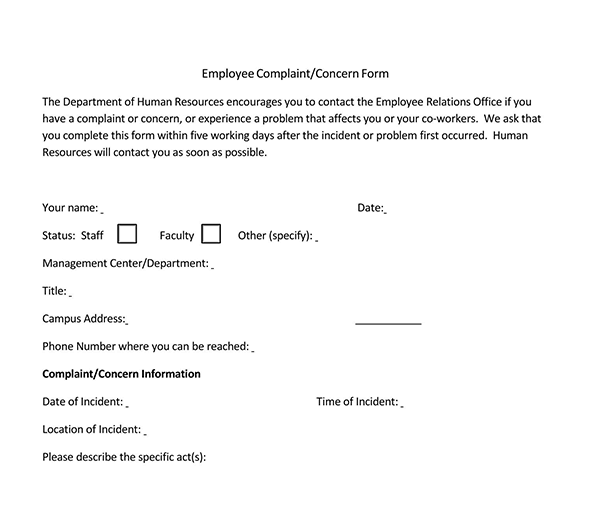
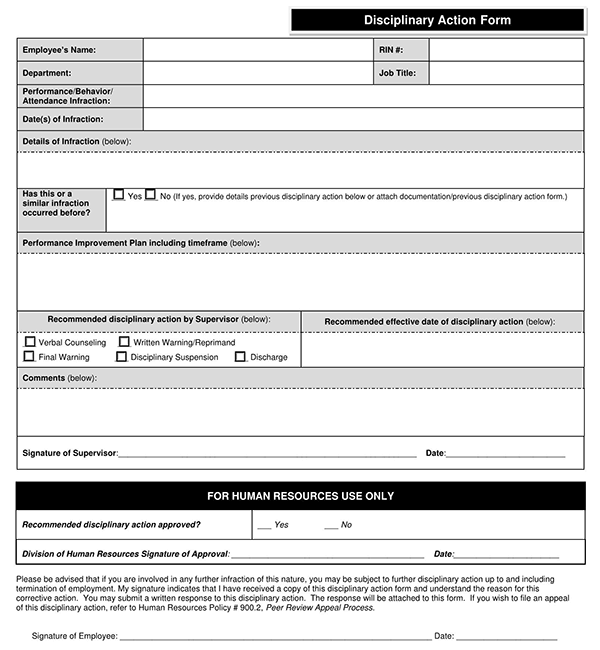
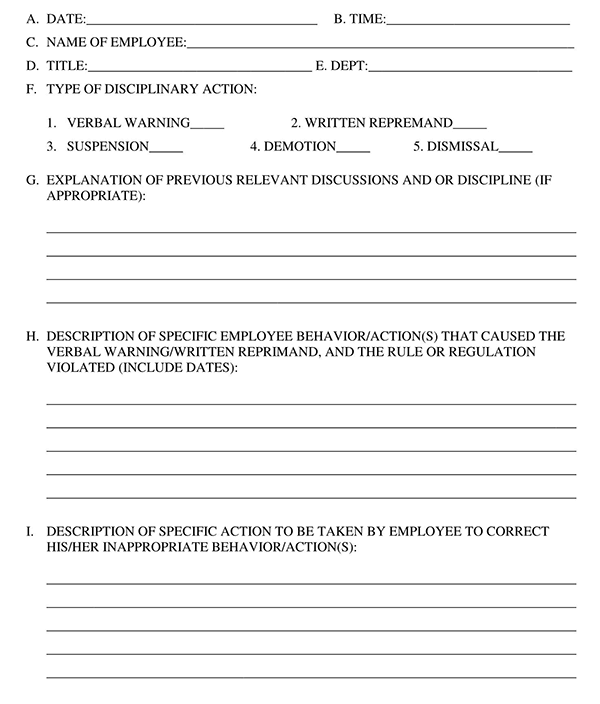
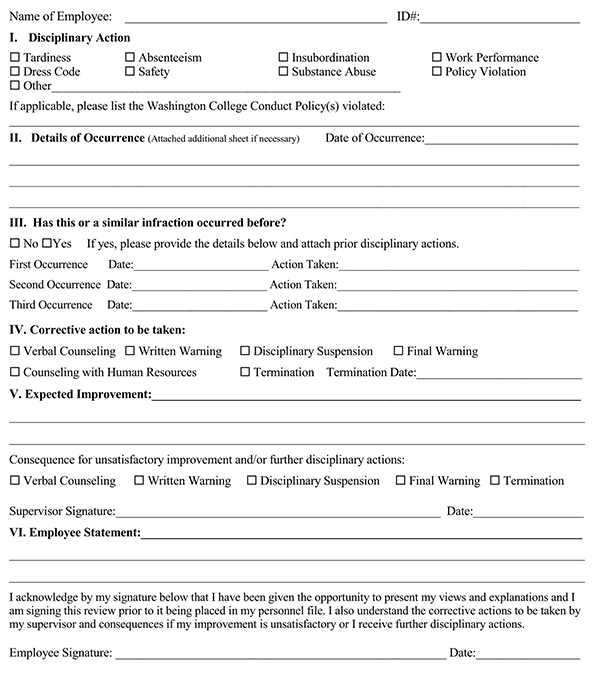
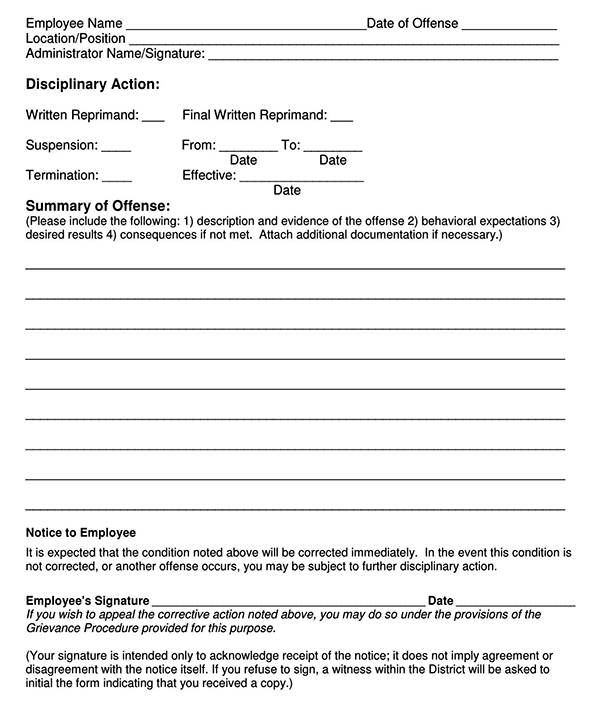
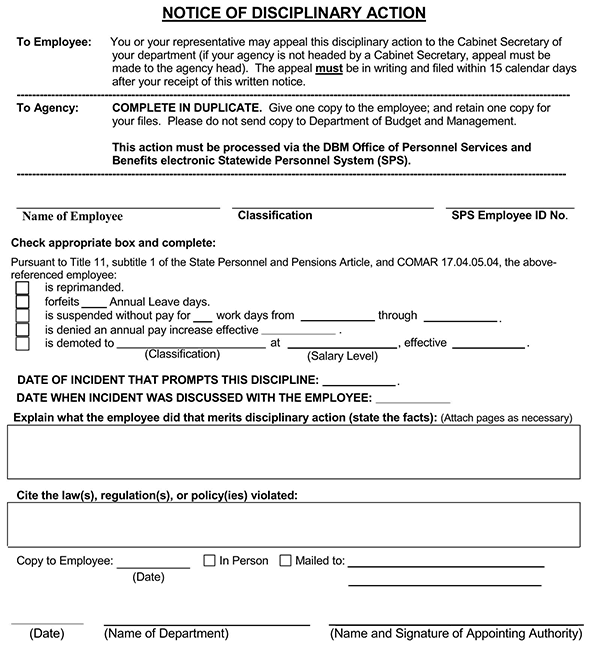
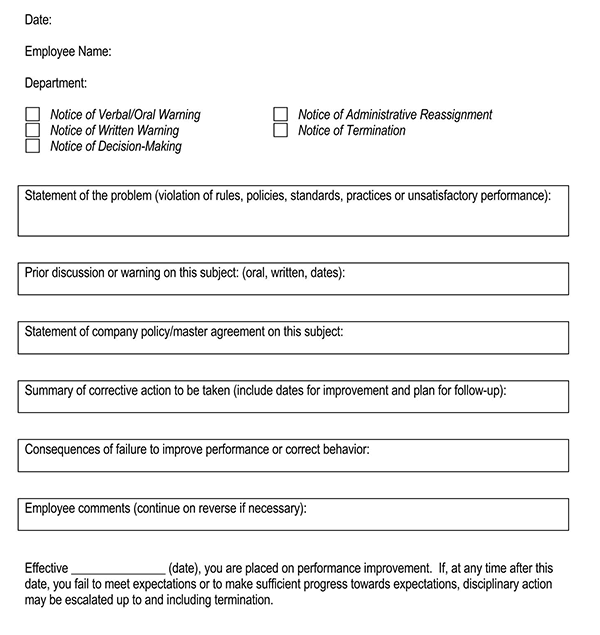
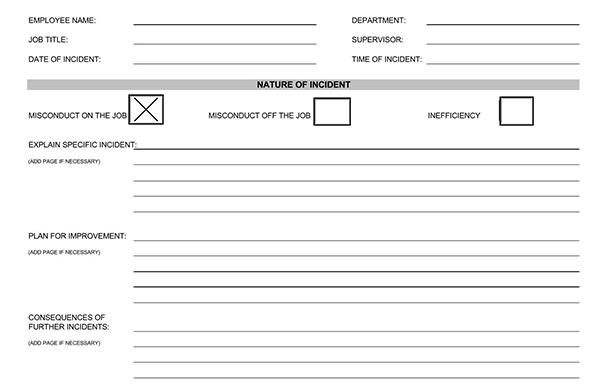
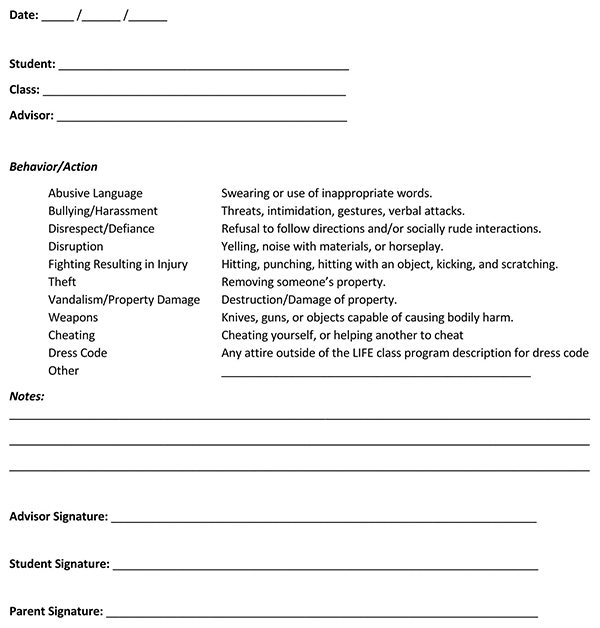
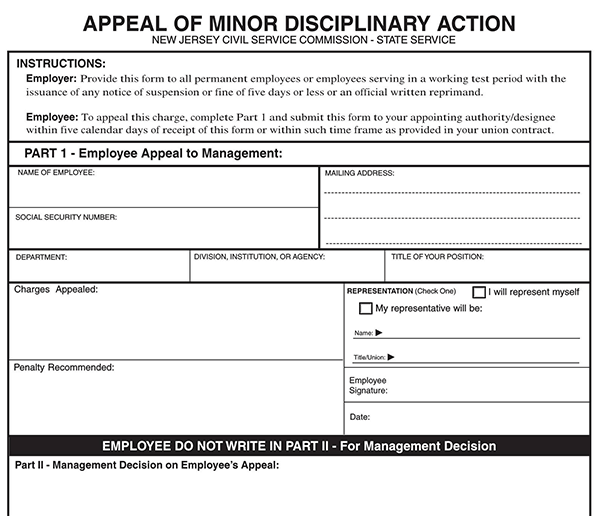
When to Use it?
A write-up form is used as a less severe form of response by management or HR. So, when it is used? An example of employee behavior that necessitates a write-up is insubordination. Other examples are prolonged or constant absenteeism, constant lateness, spending prolonged periods on personal matters such as social media and phone calls during work time, and failure to meet productivity targets.
When not to use
Other types of disciplinary interventions include termination, unpaid leave, demotion, and poor performance reviews. Cases that prompt more serious intervention (outside a write-up intervention) are violence or threats of violence, theft of trade secrets, workplace harassment, false identities, embezzlement, etc.
Information to be Included in Employee Write-Up
A well-written write-up will identify the behavior or violation in question and define employer expectations. In addition, the repercussions of not changing their behavior should also be clearly stated. To capture this information, most companies will have customized standard templates for use.
Below are the essential components of it:
- Name of company: The write-up should show the associated business or company where the employee is employed. Again, an official letterhead can be used to give this information.
- Employee’s name/ID number: The document needs to outline the identification details of the employee. This includes the employee’s official name and assigned employee number.
- Designation: The employee’s position or role in the company should be specified.
- Type and description of violation or conduct: The type of indiscipline act the employee has done needs to be identified, and details surrounding the indiscipline, such as the number of times the named employee has been warned of the same indiscipline.
- Supporting information and documentation: The form should provide supporting information about the indiscipline case in question. Supporting information can include references to official company records such as annual reports, assessment reports, filed complaints, etc.
- Plan and deadline for improvement: A write-up should have a manager or supervisor-proposed improvement for the employee to implement. A deadline should be for implementation, and positive feedback should also be given.
- Consequences of continued conduct: The consequences for not registering improvement before the given deadline should be indicated. This will often be a more serious disciplinary action.
- Manager’s signatures: The manager should then sign the document to indicate its authenticity.
- Acknowledgment of receipt of the letter: The form can also have a clause that declares that the employee has officially received the write-up and the notice that comes with it by signing the document.
Common Types of Write-Up
These forms will usually be written to achieve distinct objectives depending on the situation at hand. Below are examples of different types of write-ups:
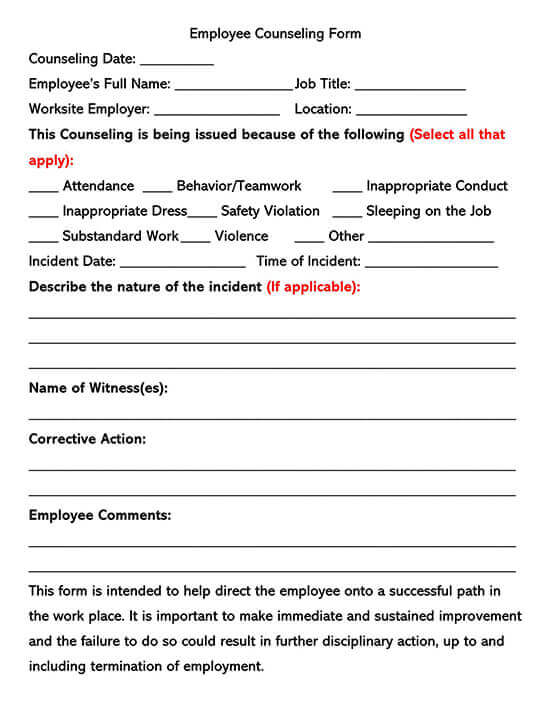
Employee Counseling Form
Download: Microsoft Word (.docx)
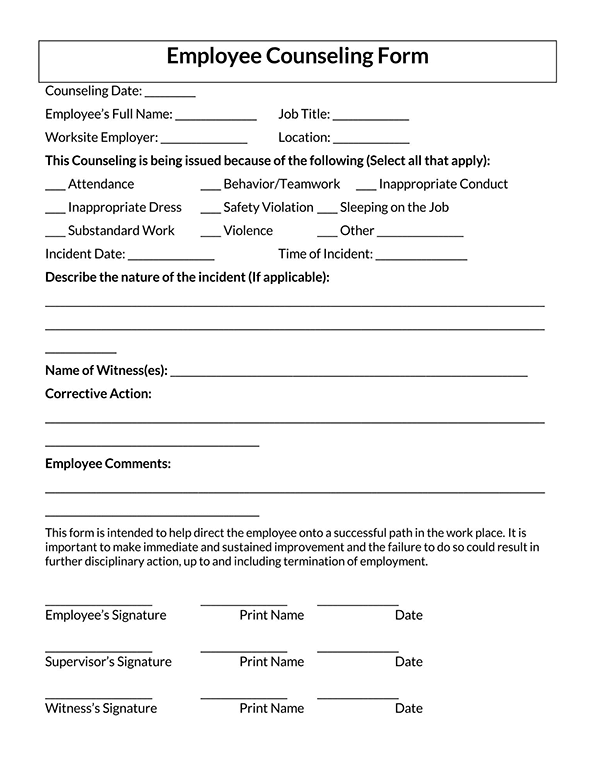
Employee Complaint Form
Download: Microsoft Word (.docx)
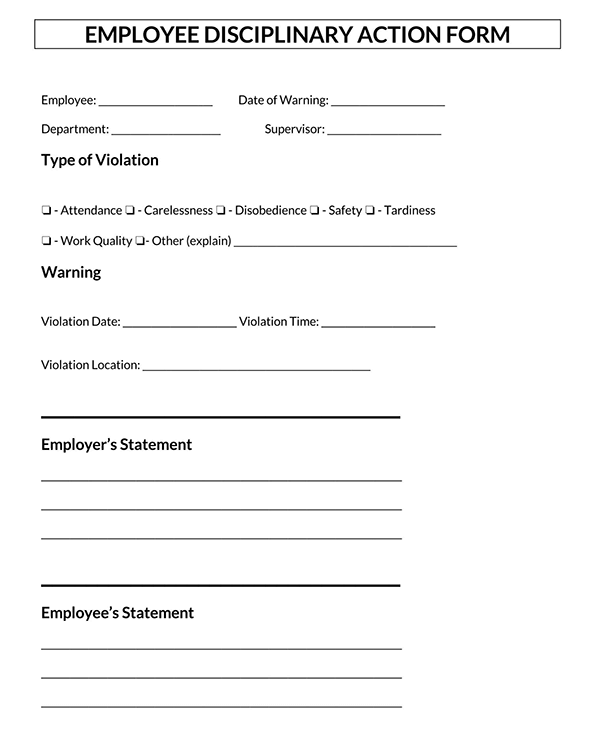
Employee Disciplinary Action Form
Download: Microsoft Word (.docx)
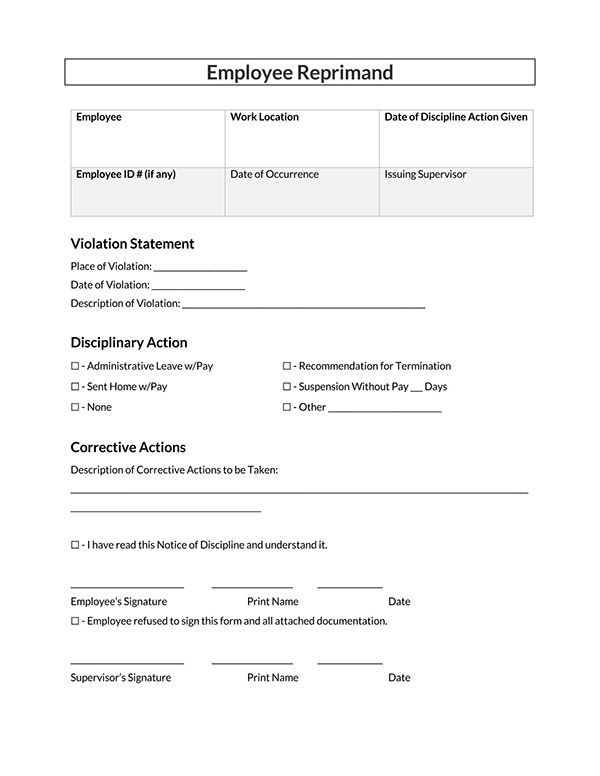
Employee Reprimand Form
Download: Microsoft Word (.docx)
How to Create a Write-Up Form?
It is a formal document that can potentially be used in litigation. This article will discuss the different steps employers and managers can use to create a professional write-up:
Employee information
The first item that should be supplied on the document is employee information. The basic information in this section includes the employee name, employee number, job title, department, and employee’s supervisor. The date, time, and location of incidence should also be indicated for specificity.
Type of offense
Secondly, the document should identify the type of infraction or misconduct the employee is being warned about. This can be more than one offense, and if so, they must all be specified. This section immediately lets the employee know what they are being confronted about.
Facts of incident
Thirdly, the write-up must clarify the circumstances under which the infraction, indiscipline, or violation occurred or was reported to the manager. This information can be given in the form of a narrative outlining the known facts about the incident.
However, if too much information cannot fit in the write-up, it can be given in a separate document and later attached to the form. This section will typically involve a lot of referencing to company policies or expectations as a basis of the employer’s claim and concerns.
note
A write-up is not vindictive but rather a remedial tool for employee management. It should be directed towards rectifying the employee’s wrongs by indicating all the necessary steps they need to take to make this possible. In addition, it forms a basis for measuring progress in an employee’s journey to correct their behavior.
Past disciplinary action
Next, it must highlight any previous offenses the employee has been summoned for and the associated disciplinary actions. This information will often be in company records. Any previous incident should be recorded as follows: the date of the incident, type of disciplinary action, and descriptive details. Past indiscipline cases are essential considerations when determining corrective actions.
Consequences if an incident occurs again
The next item to be discussed in the form is the employer’s expectations regarding how they wish the employee to correct their indiscipline and the consequence they should expect to face if this is not done. Most employees will appreciate healthy feedback and guidance on how to improve at their workplace; this section should do precisely that.
note
A write-up should be objective. It should not be a tool to pass judgment on an employee’s traits but to highlight their inefficacy at work. Therefore, it should focus on actions or tasks the employee did or did not do and not characteristics that would lead them to complete those tasks.
Information of the writer
The form should then provide details about the person preparing the document. This section needs to indicate their name, signature, and date of signing. For example, these forms can be prepared by an employee’s manager, supervisor, or business owner.
Employee statement regarding facts of the incident
To facilitate two-way communication, the write-up then needs to provide the employee’s written explanation which declares if the employee agrees or opposes the allegations made against them. An employee’s explanation can be a narrative that gives their side of the story by giving specific details about the incident.
Employee acknowledgment
Lastly, the employee acknowledgment should be provided as the last item on the document. An employee acknowledgment is a clause that states the employee read the document’s contents and agrees to them.
After this, they can sign the document and indicate the date of signing. If a witness is being used, they should also sign the document and state the date of signing. Once done, a copy of the write-up should be issued to the employee, and the document should be kept with company records.
Basic Professional Tips
Write-ups are expected to observe a high level of professionalism to communicate what an employee has done wrong clearly and effectively. To achieve this, several tips can be implemented.
They include:
- Be specific: Specificity is a crucial element in making these forms. Details about the incident should be stated precisely as they happened without any chance of misinterpretation. Use specific dates, timelines, words, and statics associated with the misconduct or incident.
- Be consistent in your write-ups: A standard policy should be implemented for all departments within a company. This way, write-ups are issued consistently in terms of procedure and circumstances that require the use of a write-up form.
- Provide clear and factual information: Any information provided in the form should be factual and precise. The author should aim to get to the point clearly and exhaustively. Any unverified allegations should not be included to avoid wrongful accusations.
- Ask those involved to sign the form: Any parties directly involved in the incident or infraction should sign the document to authenticate that the information is accurate. This also helps with accountability in a company.
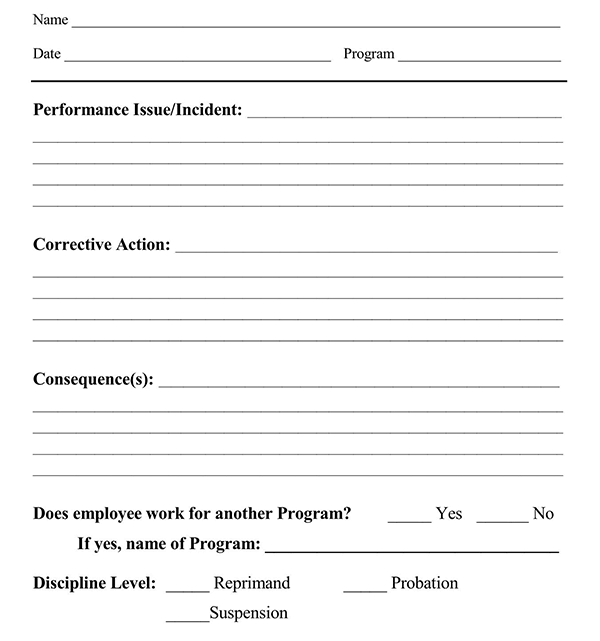
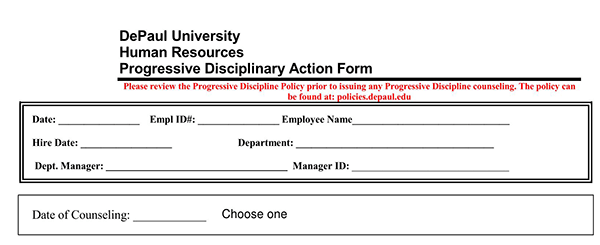
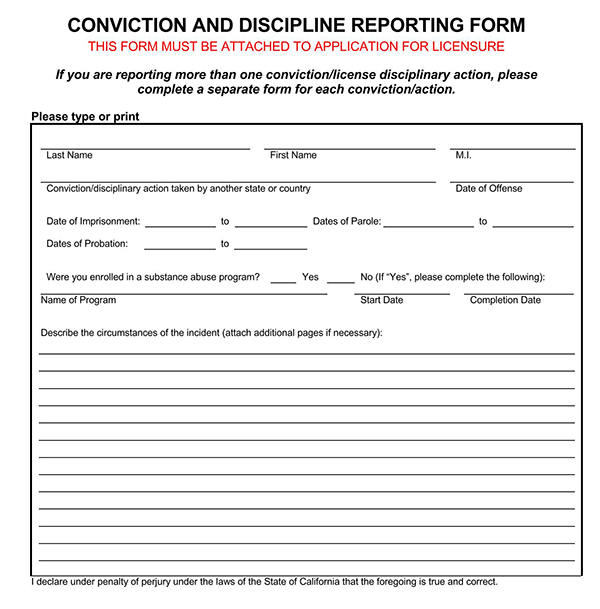
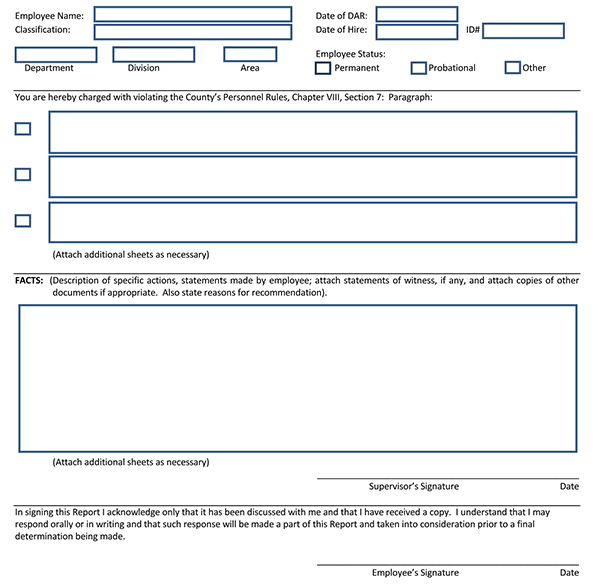
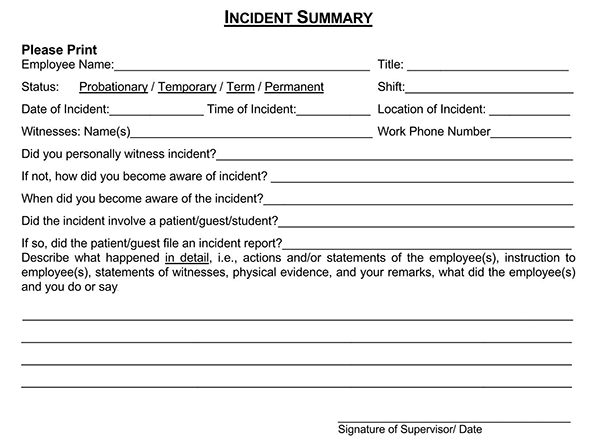
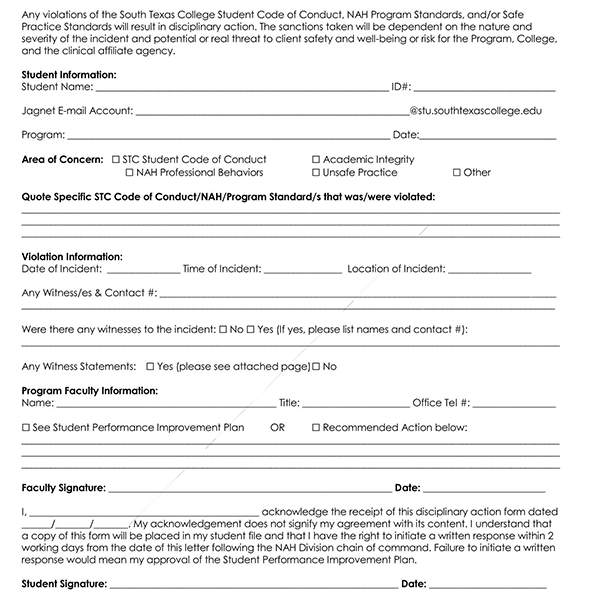
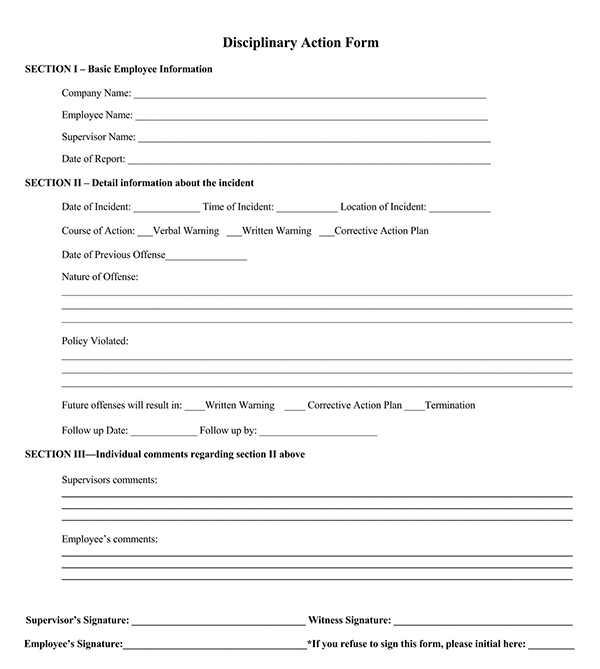
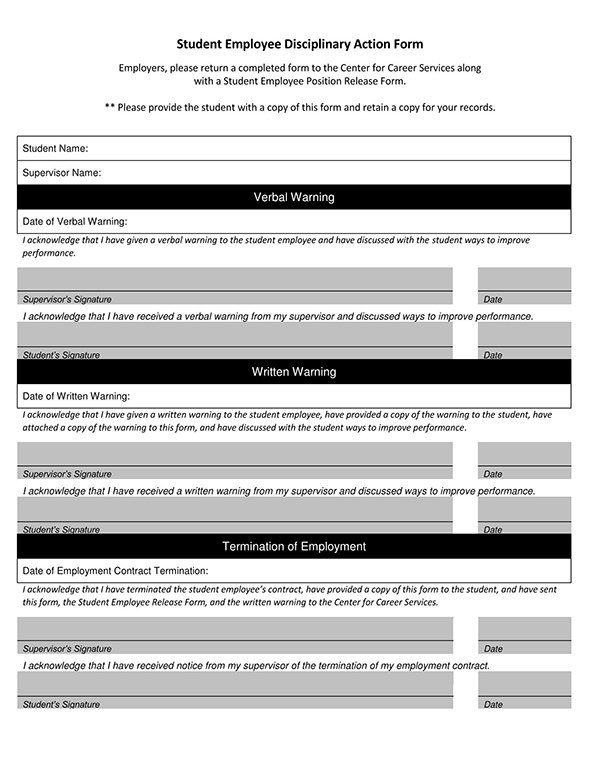
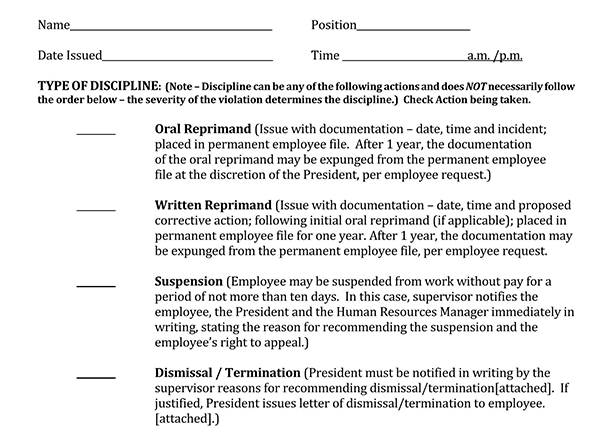
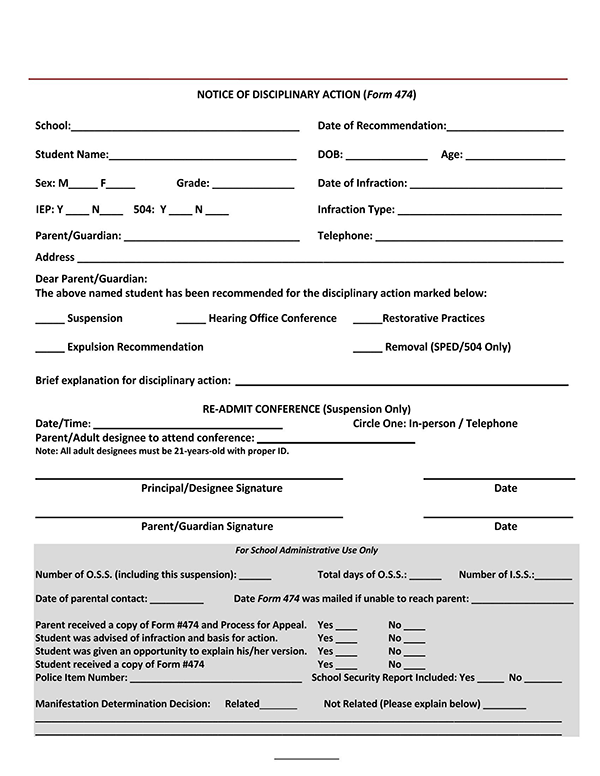
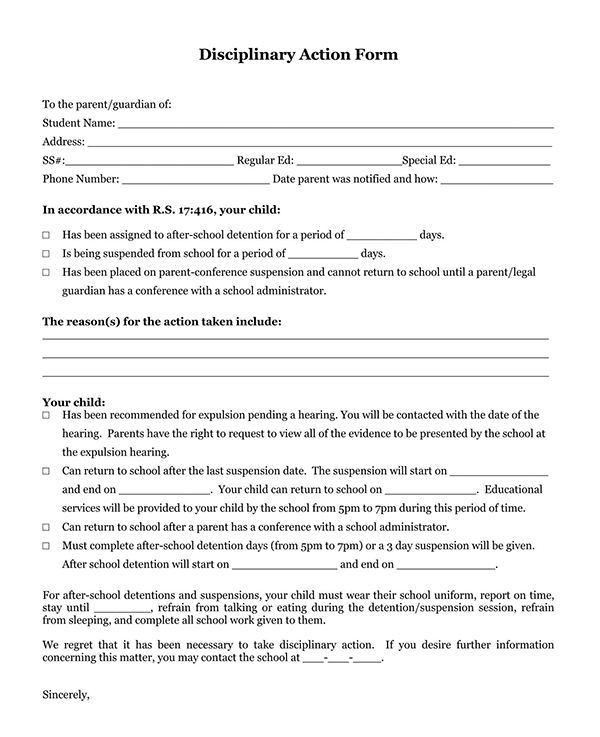
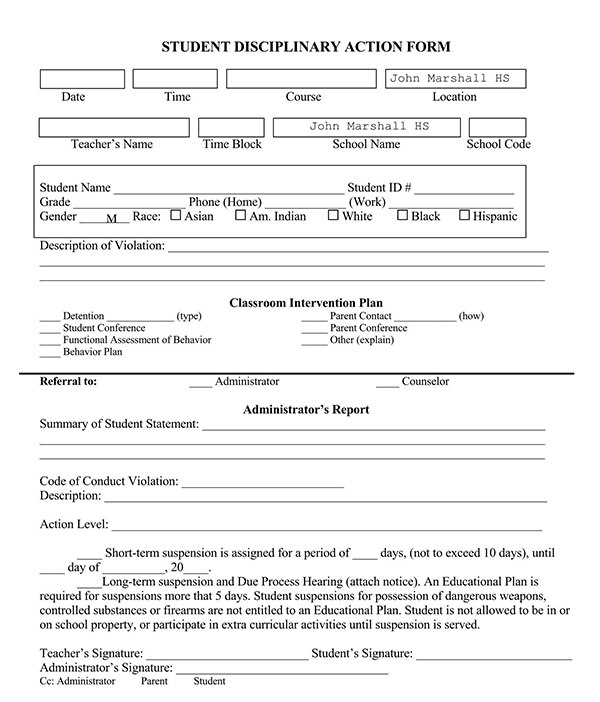
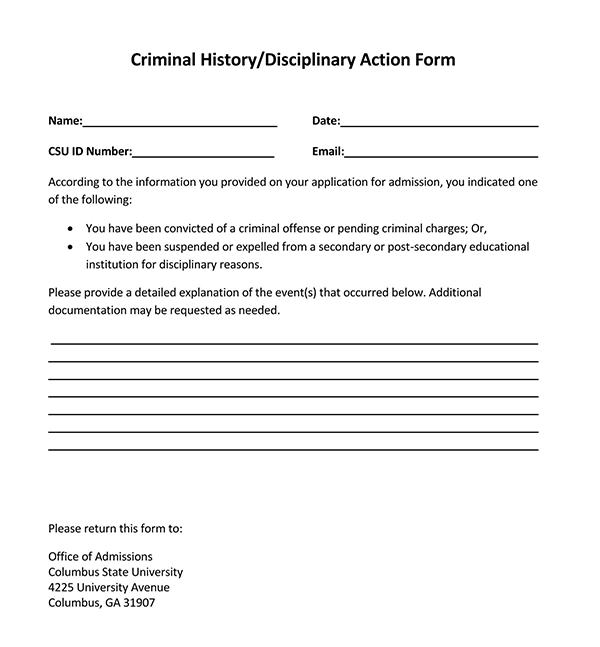
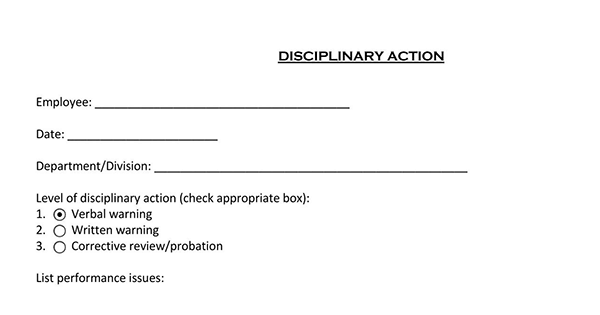
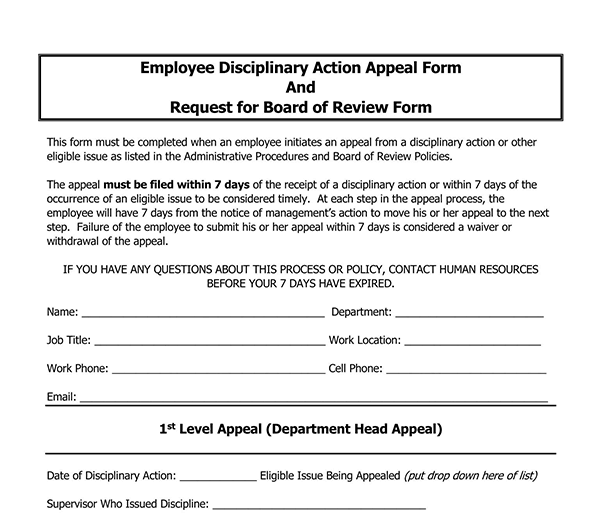
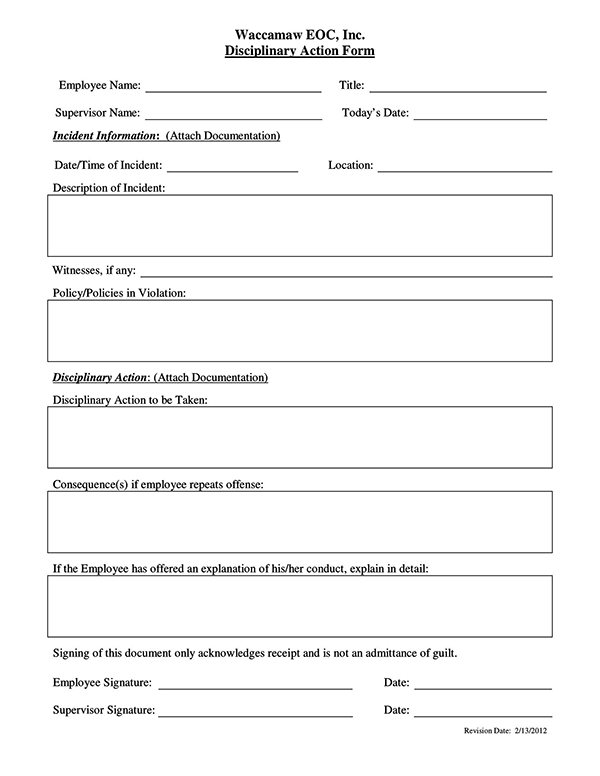
But, How to Fill it?
The form should be systematically filled out to ensure every detail is accurately captured. The objective of it is to help the employee improve, and this must come out clearly by focussing on the issue and the improvement. Additionally, it should be clear how the employee violated company standards or policy. Lastly, the document should focus on a few issues as too many issues may be deemed harassment. The improvement should be specific and realistic. The plan should have performance metrics and targets to measure improved behavior and available resources to support the employee. Finally, the documents should be signed.
note
The manager or HR should hold an in-person conversation with the employee before issuing them the write-up. The meeting should be in the presence of a third-party (witness). The objectives of the meeting should be to inform the employee of the issue at hand, willingness to help them take appropriate action, and answer any questions the employee might have.
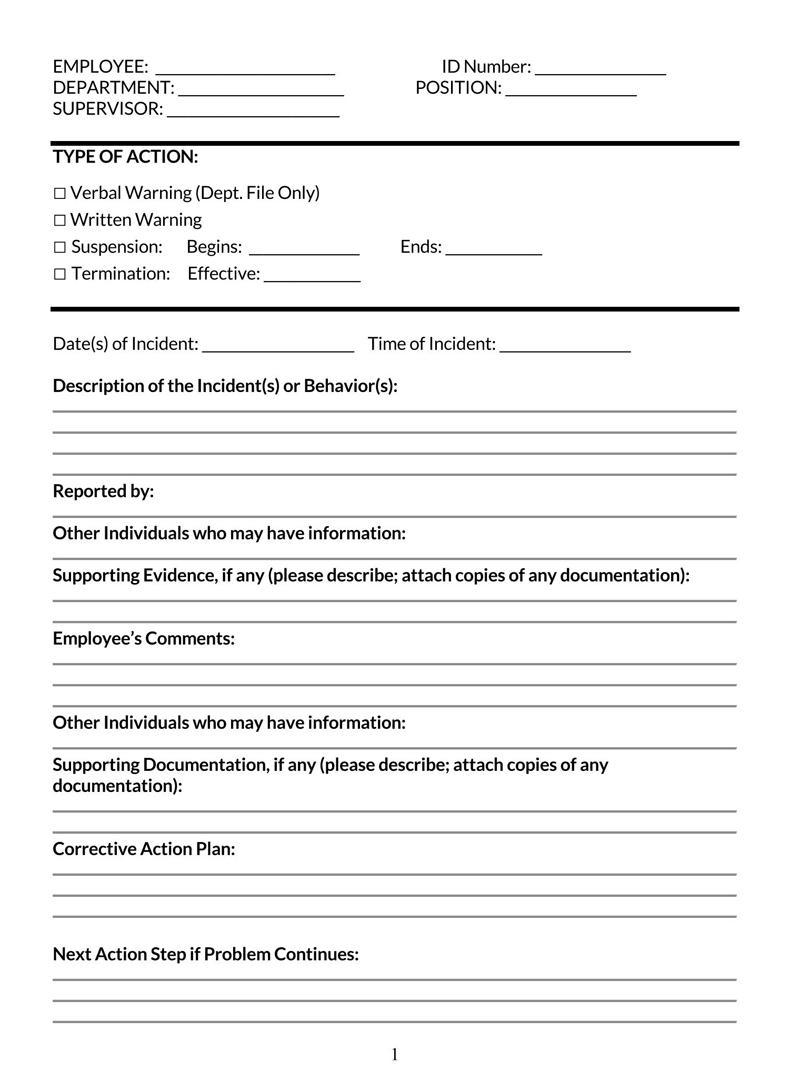
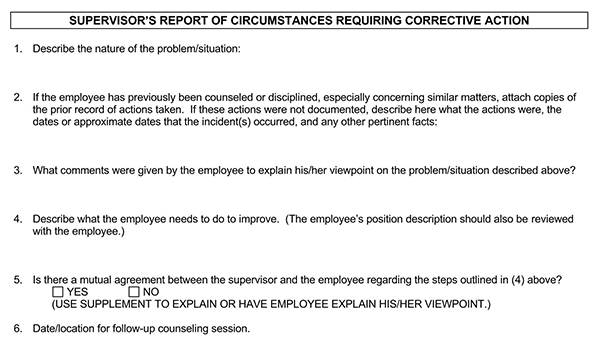
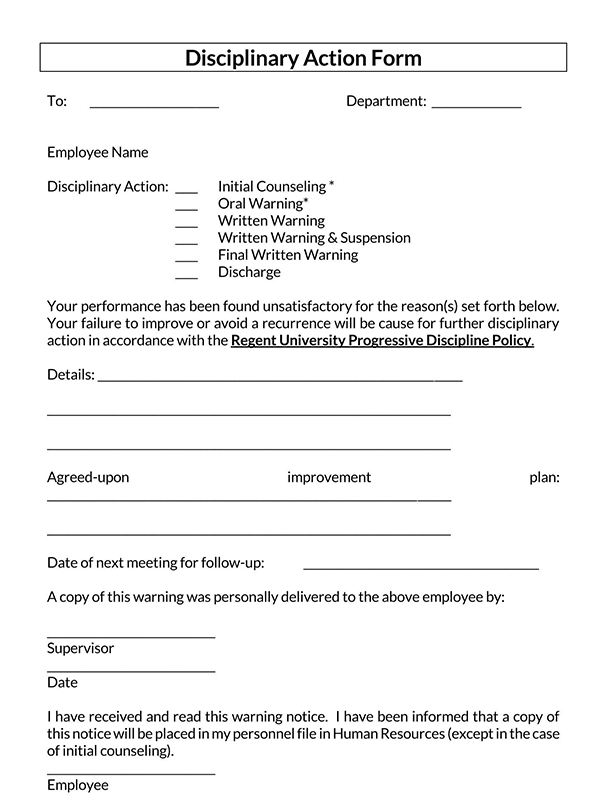
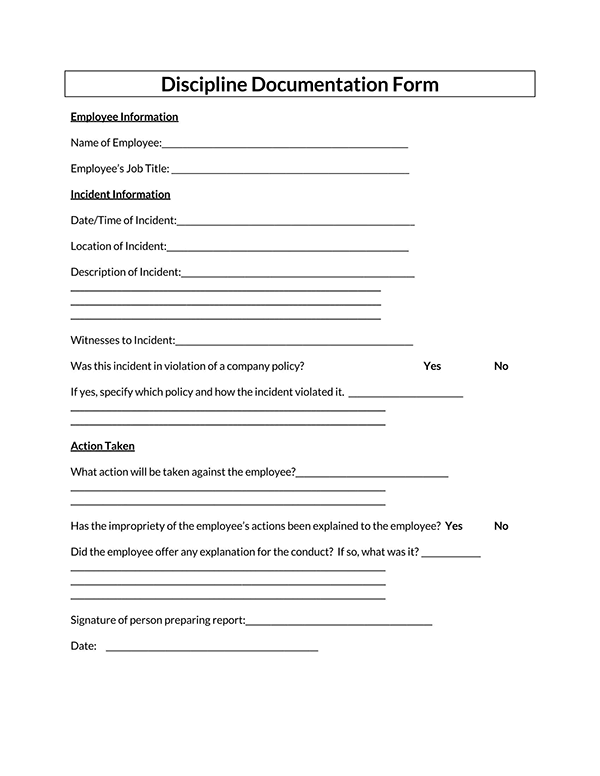
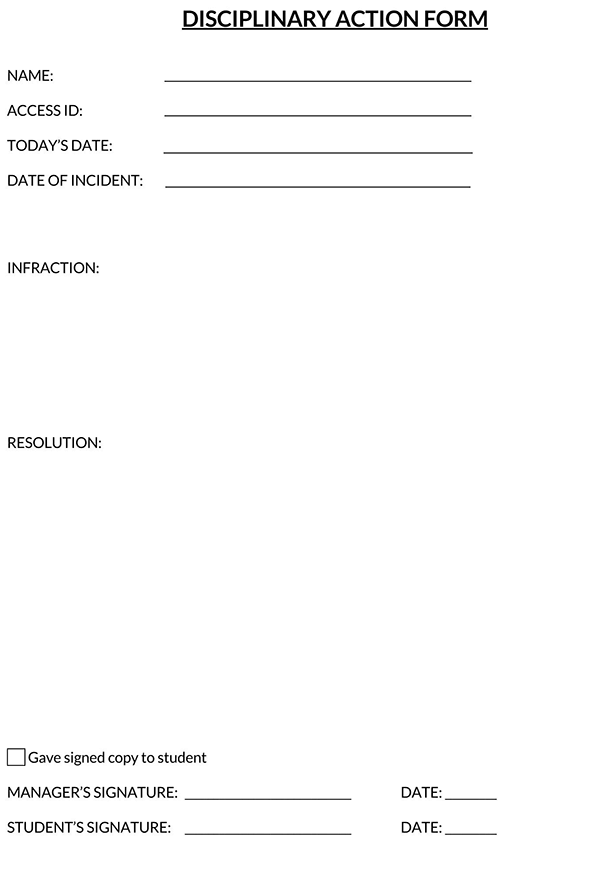
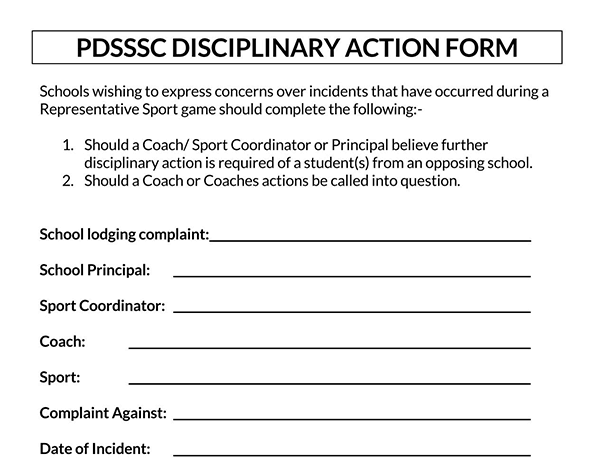
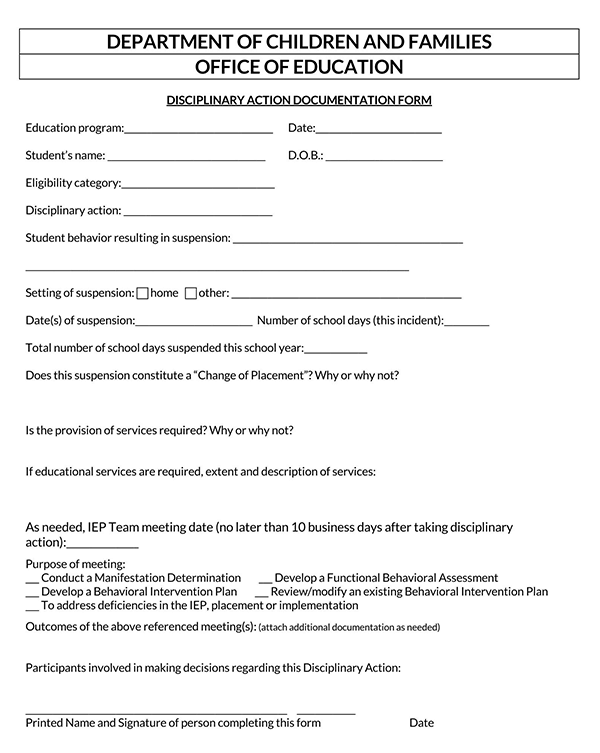
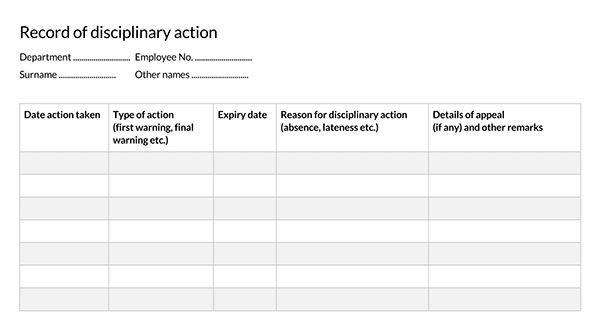
Frequently Asked Questions
Disrespect can be documented by outlining specific details such as dates, actions, quoting them, etc., instead of focusing on the employee’s attitude. Disrespect can also be documented through witness statements that highlight the employee’s disrespectful behavior.
Ordinarily, no single rule governs an employee’s write-up to be deleted from the employee file. This is typically dependent on management. In some cases, removing the write-up from permanent records is an incentive for the employee to improve.
Not at all. An employee has the legal right to agree or refuse to sign the form that is not insubordination. However, most employees will refuse to sign the document because they do not agree with its contents or allegations.
This presents an issue because most employers will require employees to sign the document indicating that they received it and agree. Therefore to resolve this, an employee acknowledgment that states the employee agrees or opposes the document’s contents can be added to the write-up.
This way, the employee can indicate their stance on the issue while still signing the document to show they received it. In addition, employees can attach a rebuttal to the write-up and send it to their manager if they disagree with its contents.
Yes. An employee has to be notified in person about the issue at hand before being issued an employee write-up.
Not quite. Ordinarily, the company reserves the right to revise its employee handbook at its convenience and keep its records intact. This means data in the previous handbook gets transferred to the revised handbook.
An employee will often be given a write-up if they exhibit the following behaviors at work; absenteeism, violation of company policy, tardiness, substandard work, insubordination, unauthorized time offs, and inappropriate behavior toward colleagues and clients.












